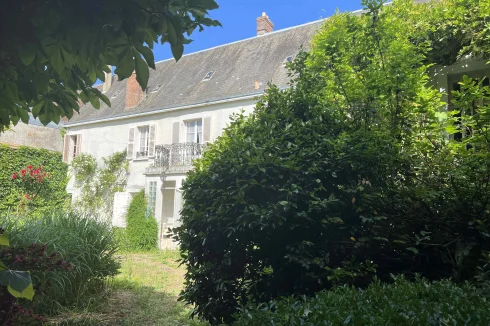New Planning Controls on Septic Tanks in France
Wednesday 15 October 2008
You will soon need planning permission to install a septic tank in France, which will also need to comply with new building and performance standards.
Many millions of households in rural France are not connected to a mains sewerage system, so instead use a septic tank or similar system as their means of ablution.
Local councils have responsibility for overseeing the regulation of these systems, but the task is carried out in a very uneven manner, often because smaller councils have neither the technical nor the financial resources to carry out the task.
The councils are required to inspect all septic tanks in their locality by 2012, but all reports suggest that many are going to miss this target.
The French Government is now proposing to heap more pressure on cash strapped councils by requiring that all septic tanks be subject to the normal planning process.
At the moment, there is no requirement to obtain planning permission for a septic tank, although separate approval procedure is often (but not always) in place.
In future, it seems anyone proposing to install a septic tank will be required to submit a formal planning application for the installation, although the precise details of the application process, and from when it will be applicable, have yet to be announced.
Whilst local councils in France are charged with responsibility for local sewerage systems, not all of them have in place a satisfactory system of regulation and management for septic tanks, so it is not clear how they will carry out this task.
All are formally required to establish a regulatory and advisory agency called a Service Public de l´Assainissement Non Collectif (SPANC) but, notably in some rural areas, no such body exists.
As a result, the procedures for approval of new septic tanks, and the inspection of existing septic tanks, varies between councils in France.
Many rural councils use technicians employed by the septic tank installers to undertake this task, so you do need to be wary about a conflict of interest when you listen to what the technicians have to say!
Installing a Septic Tank in France
If you are installing a new septic tank, some councils require that you submit an application form called a Demande d'Installation d'un Dispositif d'Assainissement Autonome (DIDAA), which is then submitted to the local SPANC for consideration. Others require no such application.
Accordingly, the only way of being sure of what is required is to make enquiries of your local mairie.
Under the new regulations, it seems that the requirement to consult with the local SPANC will become mandatory, and if one does not exist in a commune then it is likely the government will insist on intercommunal arrangements being made.
Whatever may be the local procedures you would be well advised to be very cautious about the way you approach the installation of a septic tank.
As we have reported in a previous Newsletter, the technical standards for septic tanks are being changed, and an inspection process in taking place, with the prospect that those septic tanks that do not meet an appropriate minimum standard will need to be replaced or upgraded. The new regulations have recently been published by the French government in draft form, and should be formally enacted into law later this year, following consultation with the EU authorities.
The new regulations have recently been published by the French government in draft form, and should be formally enacted into law later this year, following consultation with the EU authorities.
The regulations make clear that the requirements for any particular septic tank will depend on the size of the property, soil and other topographical conditions, so each site requires individual assessment.
'The technical characteristics and the size of systems must be suitable for the flow of waste to be treated, the characteristics of the building to be served, such as the number of main rooms, the characteristics of the plot of land on which they are installed, particularly the suitability of the soil for sewerage, as well as the requirements described in Article 5 and the sensitivity of the receiving environment.
Installed systems must allow the common treatment of all domestic wastewater consisting of toilet waste and household water produced by the building.
By way of derogation to Article 3, toilet waste may be treated separately from household water in the case of restoration of existing systems designed this way.'
For all water tank systems the regulations state that, 'the net height of water must not be less than 1 metre. It must be sufficient to allow the presence of an area of liquid within which the outlet device for treated wastewater is located.
The net volume of all-water tanks, the volume provided for liquid and the collection of sludge, measured between the bottom of the tank and the lower level of the liquid outlet aperture, must be at least equal to 3 cubic metres for residential buildings comprising up to five main rooms. For larger residences, it must be increased by at least one cubic metre per additional room.'
Different treatment and pre-treatment systems are permitted under the regulations, depending on soil and topographical conditions.
You can read the draft regulations in full here.
You can read more about the process of making a planning application in France in our guide to French Land Planning System.
Thank you for showing an interest in our News section.
Our News section is no longer being published although our catalogue of articles remains in place.
If you found our News useful, please have a look at France Insider, our subscription based News service with in-depth analysis, or our authoritative Guides to France.
If you require advice and assistance with the purchase of French property and moving to France, then take a look at the France Insider Property Clinic.





